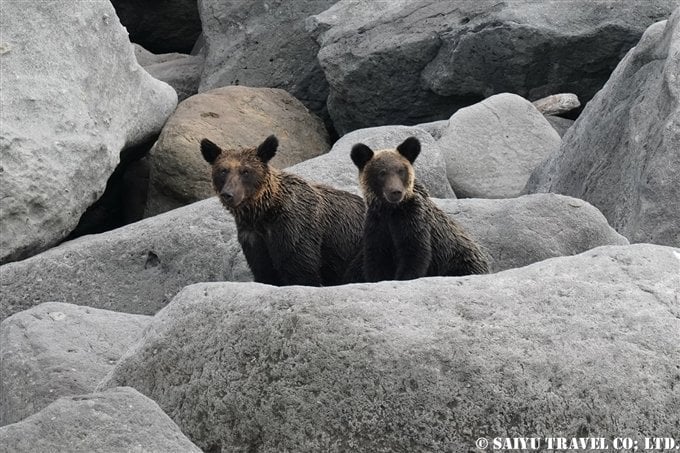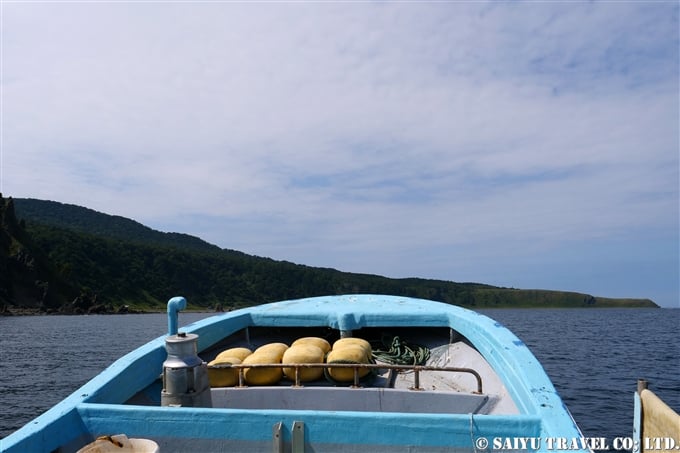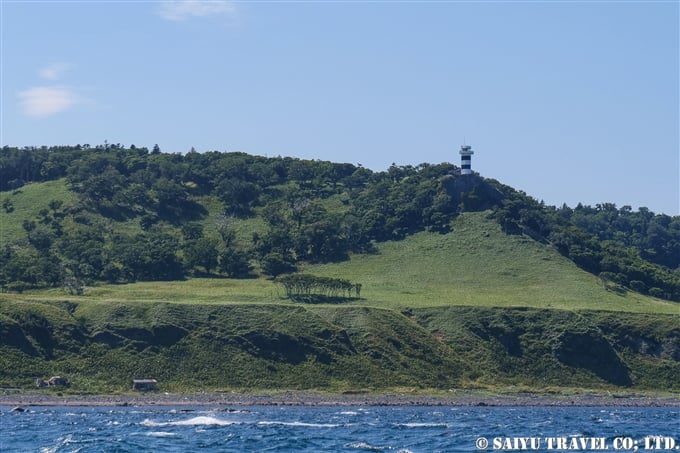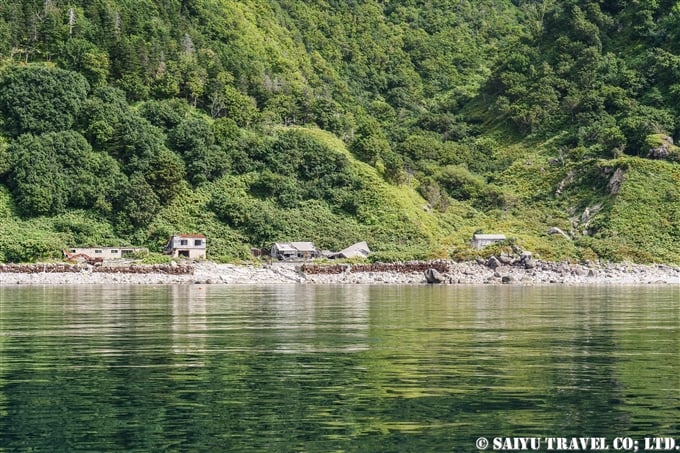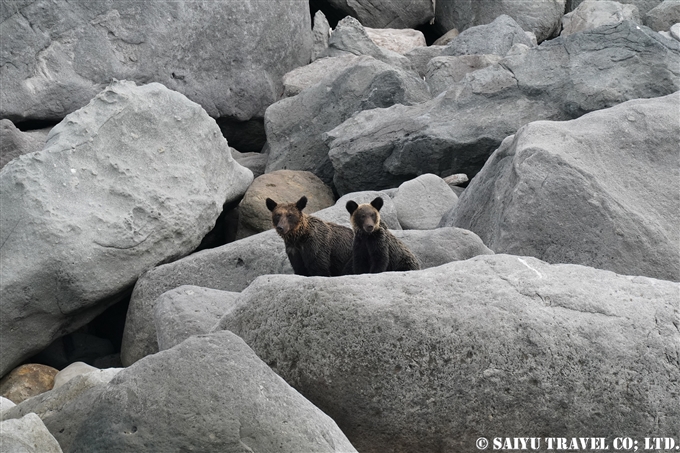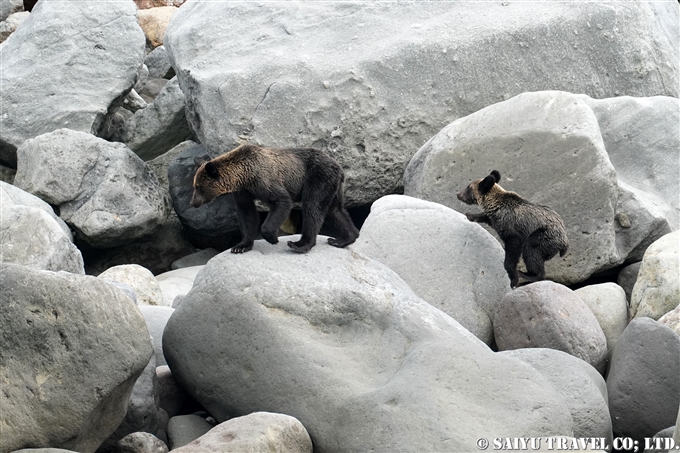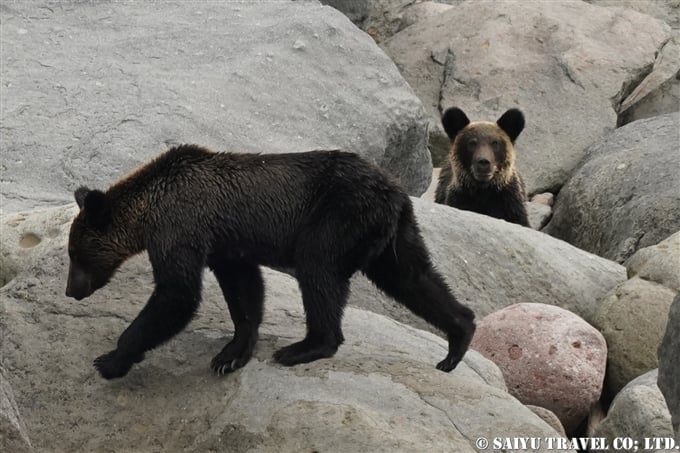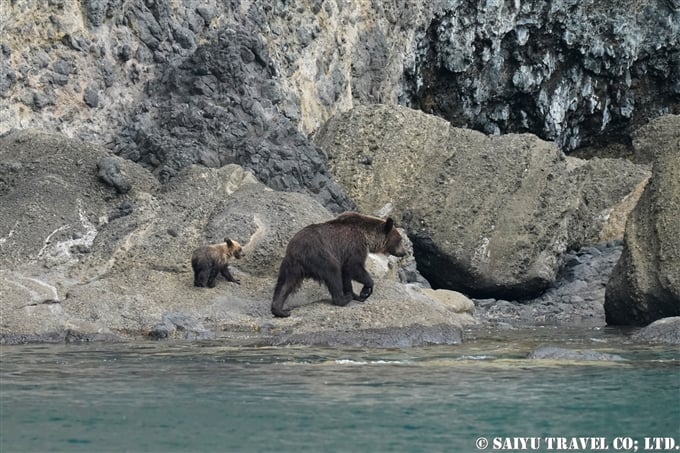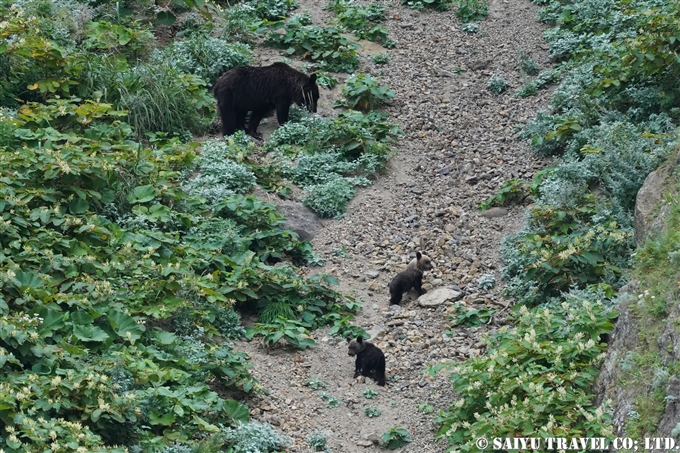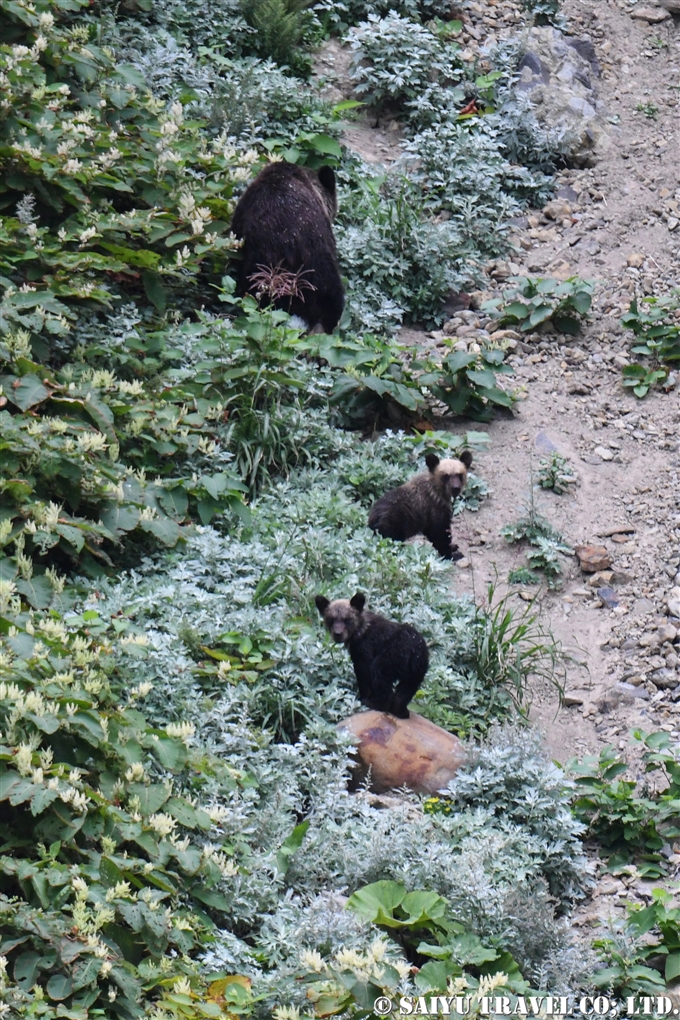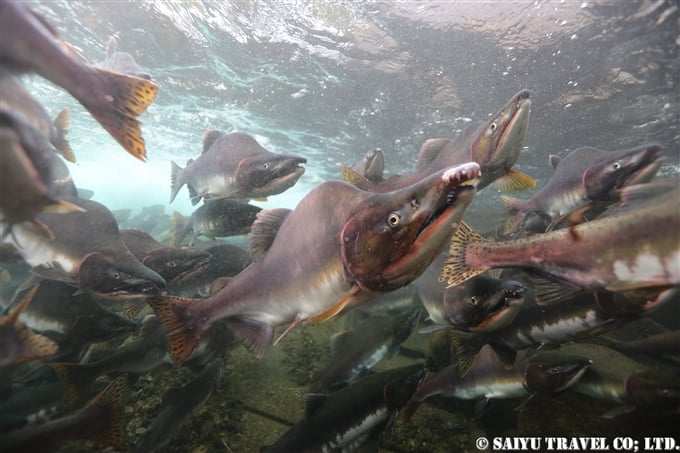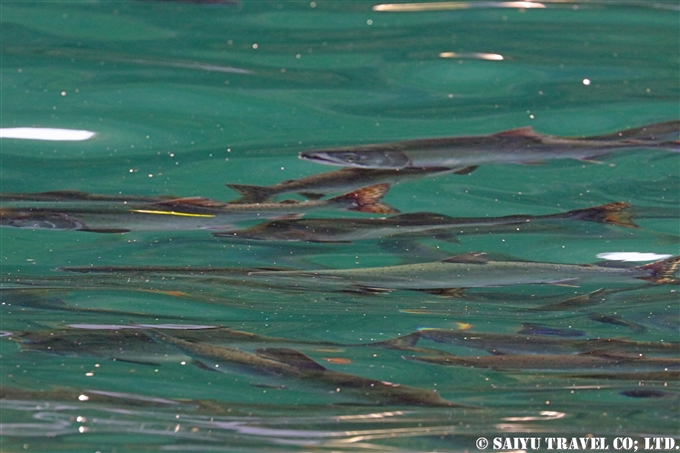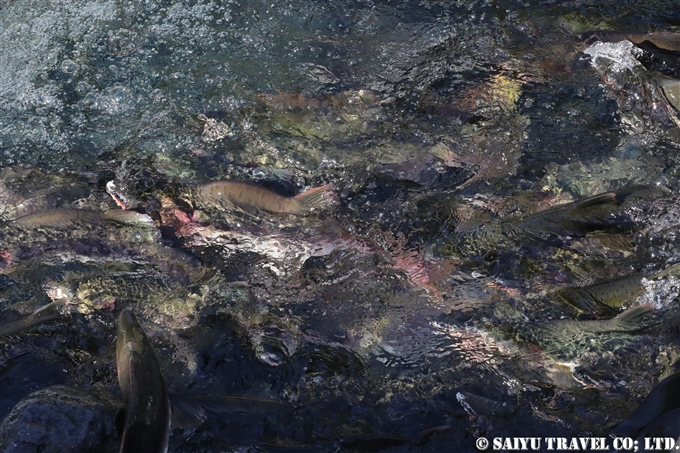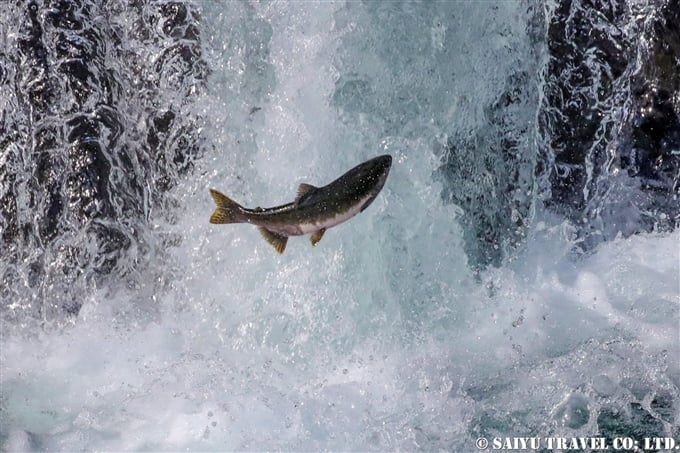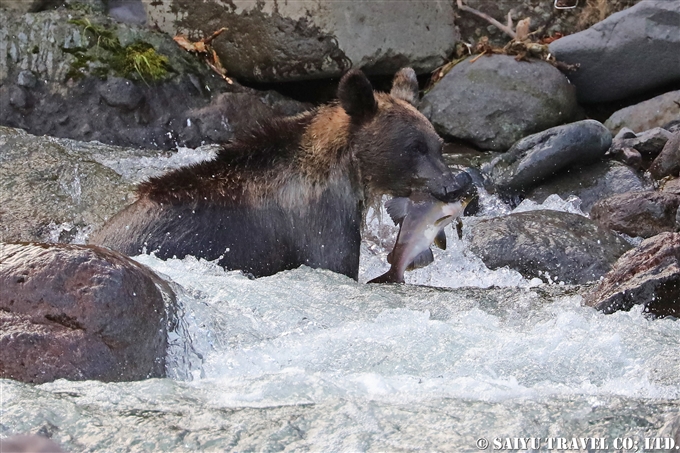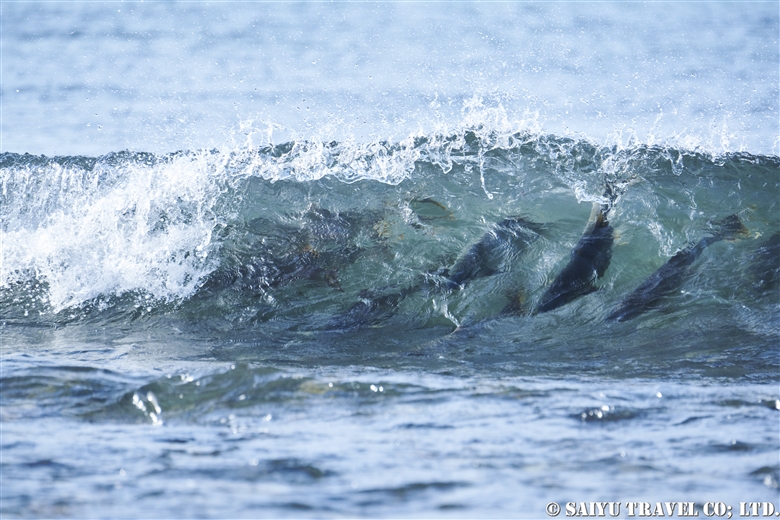
The fall of 2022 was a rough start to the winter for the bears. The pink salmon, which usually go upstream starting from mid-August every year, provide an important source of fat and nutrients for the bears to survive the winter. But this time, there were almost no salmon that came.
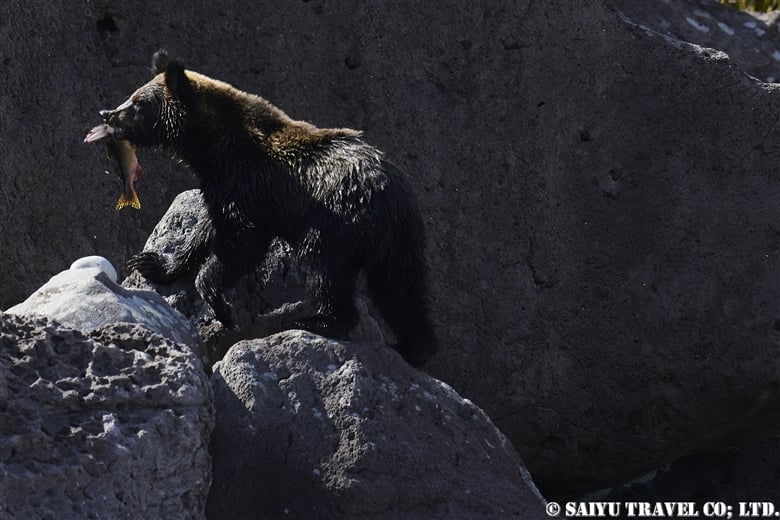
A brown bear with the pink salmon, which are dwindling in number
In 2021 was said to be bad with 1/10 the number of salmon compared to the year before. But this year was even more horribly below that. We rarely observed the brown bears in August this year, even though normally we would see them, if we took a boat along the coast. It was thought that the shortage of food would continue, but in September, the chum salmon returned in numbers that were close to the previous years’ numbers.
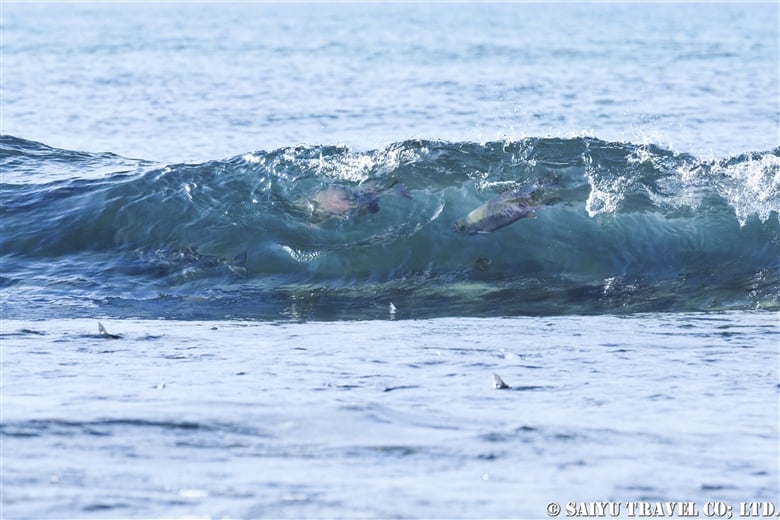
Chum salmon surfing the waves
The bears which had returned to the forests due to the lack of salmon, came back to the shorelines in September to look for returning salmon. Due to the short period of time, and fierce competition, it was quite difficult for the mother bears with cubs and the younger, weaker bears to get close enough to the beach to catch the salmon. In only a month’s time, the long, harsh winter of Shiretoko will begin.
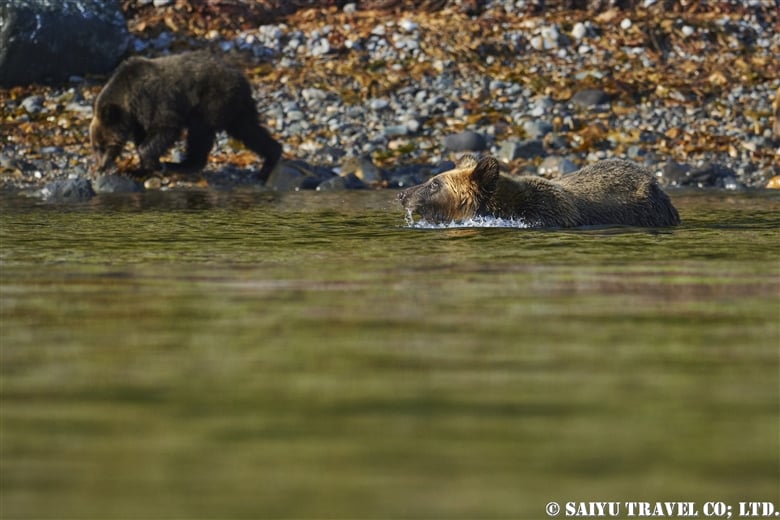
A mother bear showing her cubs how to fish for salmon

A cub imitating its mother
I hope they can get through the winter, and we can see them again next year.
Photography & text : Kaito IMAHORI (Shiretoko Serai), observation SEP2022.
*Contact us, Saiyu Travel for more information about wildlife and bird watching in Hokkaido. We can make various arrangements for your trip. We have our guesthouse Shiretoko Serai in Rausu on the Shiretoko Peninsula.
Please see other article from Kaito IMAHORI about Wildlife of Hokkaido
Rausu : Where the Killer Whales Gather
Blakiston’s fish owl that lives in the forest of Shiretoko
Tags: Saiyu Travel, Rausu, Hokkaido, Shiretoko, Wildlife, Salmon Run, Brown Bear, Brown bear Boat, Higuma, Salmon Run Hokkaido, Ezo Higuma, Higuma Photography boat, Wildlife of Hokkaido, Kaito IMAHORI, Wildlife Photography tour in Japan, Shiretoko Serai











